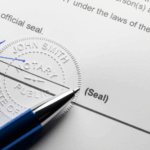
Navigating the procedural maze: A step-by-step approach
The inheritance tax filing process in Korea involves multiple steps and strict deadlines that must be carefully managed to avoid penalties. Understanding this procedural framework is essential for all heirs, regardless of whether they ultimately have tax liability. The process begins with the creation of an inventory of all inherited assets and liabilities, which forms the foundation for both the tax calculation and the required documentation.
Once the inventory is complete, heirs must determine the appropriate tax office for filing. This is typically the tax office having jurisdiction over the deceased’s last address (for Korean residents) or the location of major Korean assets (for non-residents). The standard filing deadline is 6 months from the date of becoming aware of the inheritance. However, this period extends to 9 months for heirs residing overseas. Required documentation includes the inheritance tax return form, inventory of assets and liabilities, relevant evidence of claimed deductions, and a family relationship certificate. For complex assets like business interests or real estate, professional appraisals may be required. If multiple heirs exist, a representative taxpayer may be designated to handle filing responsibilities on behalf of all heirs.
Payment options deserve careful consideration. While full payment is due with the filing, installment plans are available under certain conditions. For qualifying business assets or real estate that would be difficult to liquidate immediately, tax payment may be deferred for up to five years. In some cases, payment in kind (using inherited assets to pay tax obligations) may be permitted, though this requires advance approval from tax authorities. Missing the filing deadline without an approved extension triggers an immediate non-compliance penalty of 20% of the unpaid tax amount, with an additional 10-40% penalty based on the length of delay. Remember that even when no tax is due because deductions exceed the inheritance value, a “zero tax” return must still be filed to avoid potential penalties. Engaging a tax professional with specific expertise in Korean inheritance matters is strongly recommended, particularly for substantial or complex inheritances, as the procedural requirements are intricate and mistakes can be costly.



절차적 미로 탐색하기: 단계별 접근 방법
대한민국에서 상속세 신고 과정은 과태료를 피하기 위해 신중하게 관리해야 하는 여러 단계와 엄격한 기한을 포함합니다. 이 절차적 프레임워크를 이해하는 것은 궁극적으로 세금 부담이 있는지 여부에 관계없이 모든 상속인에게 필수적입니다. 이 과정은 세금 계산과 필요한 문서의 기초가 되는 모든 상속 자산과 부채의 인벤토리 작성으로 시작됩니다.
인벤토리가 완성되면, 상속인은 신고를 위한 적절한 세무서를 결정해야 합니다. 이는 일반적으로 피상속인의 마지막 주소(한국 거주자의 경우) 또는 주요 한국 자산의 위치(비거주자의 경우)에 관할권이 있는 세무서입니다. 표준 신고 기한은 상속을 인지한 날로부터 6개월입니다. 그러나, 이 기간은 해외에 거주하는 상속인의 경우 9개월로 연장됩니다. 필요한 문서에는 상속세 신고서, 자산 및 부채 인벤토리, 청구된 공제에 대한 관련 증거, 그리고 가족관계증명서가 포함됩니다. 사업 이익이나 부동산과 같은 복잡한 자산의 경우, 전문적인 평가가 필요할 수 있습니다. 여러 상속인이 있는 경우, 모든 상속인을 대신하여 신고 책임을 처리할 대표 납세자가 지정될 수 있습니다.
지불 옵션은 신중한 고려가 필요합니다. 신고와 함께 전액 납부가 필요하지만, 특정 조건에서는 분할 납부 계획이 가능합니다. 즉시 청산하기 어려운 적격 사업 자산이나 부동산의 경우, 세금 납부가 최대 5년까지 연기될 수 있습니다. 일부 경우에는 현물 납부(상속 자산을 사용하여 세금 의무 납부)가 허용될 수 있지만, 이는 세무 당국의 사전 승인이 필요합니다. 승인된 연장 없이 신고 기한을 놓치면 미납 세액의 20%에 해당하는 즉각적인 불이행 과태료가 발생하며, 지연 기간에 따라 10-40%의 추가 과태료가 부과됩니다. 공제가 상속 가치를 초과하여 세금이 부과되지 않는 경우에도 잠재적 과태료를 피하기 위해 여전히 “제로 세금” 신고서를 제출해야 한다는 점을 기억하세요. 절차적 요건이 복잡하고 실수가 비용이 많이 들 수 있으므로, 특히 상당하거나 복잡한 상속의 경우, 한국 상속 문제에 특별한 전문 지식을 가진 세무 전문 변호사를 고용하는 것이 강력히 권장됩니다.





